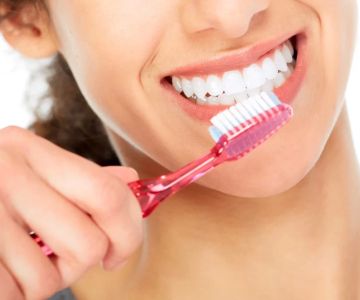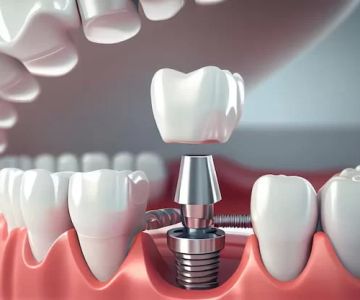How to Handle a Dental Emergency: A Practical Guide
- Introduction
- Types of Dental Emergencies
- Immediate Actions to Take in a Dental Emergency
- When to Seek Professional Dental Help
- Long-Term Care After a Dental Emergency
- Preventing Dental Emergencies
Dental emergencies can occur unexpectedly, leaving you in pain and unsure of what to do. Whether it’s a knocked-out tooth, a broken filling, or severe tooth pain, knowing how to handle a dental emergency can make a huge difference in preserving your oral health. In this guide, we’ll explore how to manage common dental emergencies, when to seek professional help, and what steps to take for long-term oral care.
Types of Dental Emergencies
Dental emergencies can vary in severity and cause, but here are some of the most common types:
1. Knocked-Out Tooth (Avulsed Tooth)
One of the most frightening dental emergencies is a knocked-out tooth. This can happen due to accidents, sports injuries, or falls. Quick action is crucial to save the tooth.
2. Severe Toothache
Tooth pain can range from mild to excruciating, often indicating a serious problem like a cavity, an abscess, or a cracked tooth. Severe toothache requires immediate attention to alleviate discomfort and prevent further damage.
3. Broken or Chipped Teeth
A chipped or broken tooth may not always cause immediate pain, but it can lead to sharp edges or sensitivity. It’s important to address the damage promptly to avoid infection or further injury.
4. Lost Fillings or Crowns
Lost fillings or crowns can expose sensitive areas of the tooth, leading to discomfort or potential infection. It’s essential to replace these as soon as possible.
5. Soft Tissue Injuries
Injuries to the gums, cheeks, tongue, or lips can also be considered dental emergencies. These types of injuries can result from trauma or accidents and may require immediate care to stop bleeding and prevent infection.
Immediate Actions to Take in a Dental Emergency
Knowing what to do immediately following a dental emergency can make all the difference. Here are the actions to take for each situation:
1. For a Knocked-Out Tooth
If you’ve lost a tooth, try to find it. Hold it by the crown (the chewing surface) and rinse it gently with water if it’s dirty. Avoid touching the root. If possible, place the tooth back in its socket or keep it in a cup of milk or saliva. Seek immediate dental care within 30 minutes for the best chance of re-implantation.
2. For Severe Toothache
If you're experiencing severe tooth pain, try to relieve it with over-the-counter pain medications. Avoid applying heat to the area, as this can worsen the pain. If swelling occurs, apply a cold compress to the outside of your cheek and contact your dentist right away.
3. For Broken or Chipped Teeth
Rinse your mouth with warm water and apply a cold compress if there's swelling. Save any broken pieces of the tooth and bring them to your dentist. If the tooth is sharp, cover it with dental wax or sugar-free gum to avoid cutting your mouth.
4. For Lost Fillings or Crowns
If a filling or crown falls out, try to place it back in the tooth if possible. Otherwise, cover the exposed area with dental wax or temporary dental cement available at most drugstores until you can see your dentist.
5. For Soft Tissue Injuries
If you’ve injured your gums or other soft tissues, rinse your mouth with warm salt water to cleanse the wound. Apply pressure to stop bleeding with a clean gauze or cloth. If bleeding doesn’t stop or the injury seems severe, seek immediate medical attention.
When to Seek Professional Dental Help
It’s essential to know when a dental emergency requires professional care:
1. Uncontrollable Pain
If the pain is unbearable and home remedies do not provide relief, you should seek professional dental care immediately.
2. Knocked-Out Tooth
A knocked-out tooth needs to be seen by a dentist immediately, preferably within 30 minutes to increase the chances of saving the tooth.
3. Severe Bleeding
If you’re experiencing excessive bleeding from a tooth or soft tissue injury that doesn’t stop after applying pressure, get professional care as soon as possible.
4. Swelling and Infection
Swelling of the gums or face may indicate an infection. If swelling is severe or accompanied by fever, seek emergency care to prevent complications.
Long-Term Care After a Dental Emergency
After a dental emergency is handled, it's important to follow up with your dentist for long-term care. They may recommend specific treatments like crowns, root canals, or restorative work to ensure your tooth is properly healed and functional.
1. Follow-up Appointments
Attend any follow-up appointments to monitor your recovery and prevent future issues. Your dentist may provide you with special care instructions or treatments to ensure your teeth stay healthy.
2. Practice Preventive Care
After recovering from a dental emergency, it's essential to maintain a consistent oral care routine, including brushing, flossing, and visiting your dentist regularly for checkups and cleanings.
Preventing Dental Emergencies
While dental emergencies are often unpredictable, there are several steps you can take to minimize the risk:
1. Wear a Mouthguard
If you play sports or grind your teeth at night, consider wearing a mouthguard to protect your teeth from injury or damage.
2. Avoid Hard Foods
Avoid chewing hard foods or ice that could cause teeth to crack or break.
3. Maintain Regular Dental Checkups
Regular visits to your dentist can help detect any potential dental issues early, preventing emergencies from arising in the future.
If you’re looking for more advice or professional dental care, visit Dentistry Toothtruth for expert guidance and top-quality dental products.







 Allendale Dental King of Prussia PA3.0 (10 review)
Allendale Dental King of Prussia PA3.0 (10 review) SA Orthodontics5.0 (62 review)
SA Orthodontics5.0 (62 review) David J Wiseman, DDS4.0 (11 review)
David J Wiseman, DDS4.0 (11 review) Above & Beyond Dentistry & Implants4.0 (540 review)
Above & Beyond Dentistry & Implants4.0 (540 review) Dr. Irina Babayan4.0 (9 review)
Dr. Irina Babayan4.0 (9 review) Elizabeth D. Caughey D.D.S. PC4.0 (19 review)
Elizabeth D. Caughey D.D.S. PC4.0 (19 review) The Importance of Oral Health Education During Pregnancy for a Healthy Pregnancy
The Importance of Oral Health Education During Pregnancy for a Healthy Pregnancy Best Tips for Brushing Your Teeth Properly for Healthy Gums: Essential Techniques for Oral Health
Best Tips for Brushing Your Teeth Properly for Healthy Gums: Essential Techniques for Oral Health Why Skipping Dental Checkups Can Lead to Bigger Oral Health Problems
Why Skipping Dental Checkups Can Lead to Bigger Oral Health Problems Advantages of Porcelain Dental Restorations
Advantages of Porcelain Dental Restorations How Can Diabetes Cause Tooth and Gum Problems? Preventing and Managing Oral Health Issues
How Can Diabetes Cause Tooth and Gum Problems? Preventing and Managing Oral Health Issues Healthy Habits for Promoting Good Oral Health and Hygiene: Tips for a Healthy Smile
Healthy Habits for Promoting Good Oral Health and Hygiene: Tips for a Healthy Smile